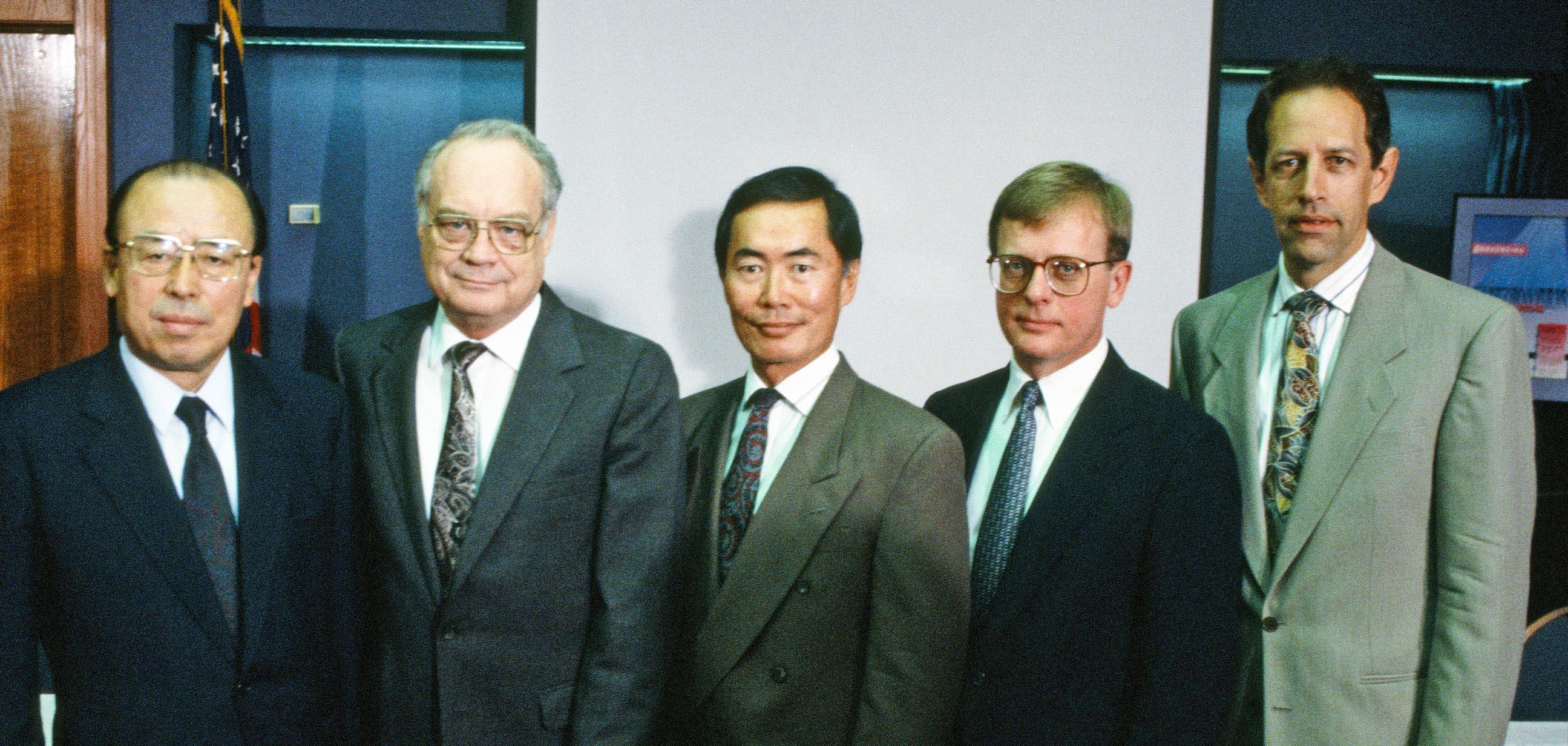Meet the Father of ExploraVision
Meet the Father of ExploraVision
Over two decades ago, respected educator, Dr. Arthur Eisenkraft, co-created the ExploraVision program with Toshiba and NSTA. 25 years later, the program is stronger than ever with Dr. Eisenkraft at the helm, serving as a trusted advisor and judge. See how Dr. Eisenkraft believes ExploraVision maintains its competitive edge, what’s trending in classroom learning and what you can do to inspire your students.

Dr. Arthur Eisenkraft (far right) at the first ExploraVision Awards Weekend event with former celebrity spokesperson George Takei, NSTA and Toshiba executives in 1992.
How did you first get involved in ExploraVision?
25 years ago, I had an idea to create a program for high schoolers that combined two interrelated concepts: technology and critical thinking skills. Toshiba and NSTA were intrigued, so we worked together to create an initial idea for the competition. After a successful first year, we then expanded the program from high schools only to elementary and middle schools.
What are some teaching trends you forecast in STEM education?
I am always surprised at how well project-based learning can reach students and keep them engaged. Long-term projects making it more meaningful for students to put in the effort and feel proud of their accomplishments at the end.
I predict more science teachers will implement standards such as NGSS. I believe the lessons plans subscribe to the needs of the world around us.
Unsurprisingly, more students will become engineers than chemists, scientists, or other lab-based professions. Interestingly enough, most students won’t have any exposure to the myriad fields of engineering unless they have a close relative in that industry. Offering an engineering course at schools OR infuse it into science courses. Engineering courses are very valuable
Think about technology 20 years from now. Break throughs asking them how will you be a change maker/agent. Understanding the natural world should be thrilling and engineering your ideas into technologies benefiting society.
How can teachers foster an interest in STEM learning?
Through ExploraVision, teachers can get students to realize nearly anything can be an application of science and technology. For example, when a pencil keeps falling off a slanted desk, a student might use an eraser to prevent the issue. In a matter of seconds, a student recognized an issue, designed a solution and prevented any future problems. After involvement in ExploraVision, students recognize that invention can happen at any level—big or small. Teachers should encourage students to address and fix problems, which bolsters confidence in STEM concepts and beyond.
As a judge, what are the top qualities you look for in award-winning projects?
The number one quality is creativity, followed closely by unique approaches. Judges aren’t looking for one kind of technology—it can be simple or advanced, purely for entertainment or even serving a societal need. There is a wide spectrum of opportunities for students to demonstrate their understanding of the world around us through technology.
How can you pique a judges curiosity? Students can point out the positives and negatives of their technology. Nothing is flawless. Critical, holistic and analytical thinking will show judges how invested students are in their projects.
Stay connected with ExploraVision! Follow us on Facebook and Twitter for more details and previous years’ winners.